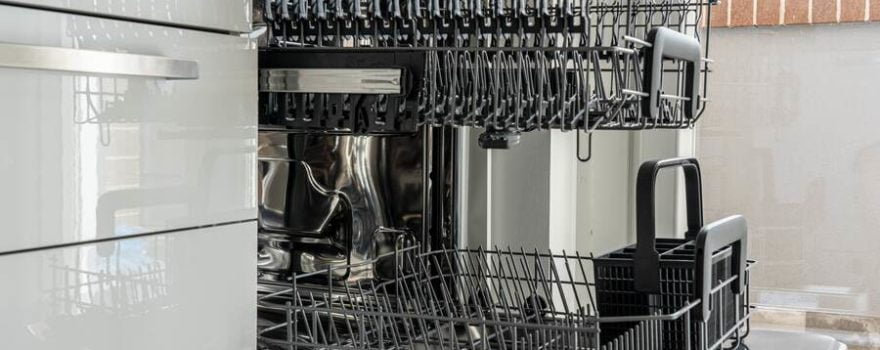
Identifying and Fixing Dishwasher Leaks – A Comprehensive Guide
Like any appliance that uses water, dishwashers can develop leaks. There are several different faults that can cause this, some require the skills of a professional service engineer to remedy them, in other cases you may be able to do the work yourself.
Identify the Source of the Leak
The first step in fixing a leaky dishwasher is locating the source of leak. The best way to do that is to observe the machine as it works through the cycle and see where the water is coming from. Common reasons for leaking are problems with the:
• Gasket
• Hoses
• Spray arm
• Water inlet valve
• Pump
• Float or float switches
When you run a cycle, water leaking from around the door indicates that the problem is likely to be with the gasket, float or spray arm. Water coming from under the machine suggests a fault connected with the hoses, water inlet or pump.
Water coming from around the door
Gasket – The gasket is the rubber or vinyl seal found either in the door itself or just inside the tub. It should be soft, pliable and free of visible cracks or splits, if it is not it needs to be replaced.
Spray arm – You’ll find this in the bottom centre of the tub. Check for cracks, warping or blockages. If the holes in the spray arms are blocked try taking it out, cleaning and returning it. A warped or cracked spray arm will need to be replaced.
Float – To check that the float and float switches are operating properly you’ll need to run the machine to mid cycle, stop it and open the door. It the water level is higher than the heating element at the bottom of the dishwasher it suggests a faulty float or float switche. One or the other will need to be replaced.
Water coming from under the machine
To trace leaks from underneath the machine you’ll need to remove the access panel at the front so that you can inspect the components that may be faulty, you’ll need a torch to check:
• Hoses – Look for signs of cracking, hardened rubber or even something as simple as a loose connection.
• Water inlet valve – As with hoses, you’re looking for cracks or loose connections.
• Pump – Check for cracks in the pump itself or in the seals and gaskets around it.
In all cases you’re looking for water seeping from a leak point or signs of water damage. You’re more likely to spot problems if you carry out your checks just after the machine has been used.
DIY or Professional Repairs?
Dishwasher repair jobs that you may be able to do yourself include replacing gaskets around doors or spay arms. Determining what needs to be replaced if the problem is with the float or float switch is more of a specialist job.
When it comes to working under the machine things get a bit more tricky as you’re in proximity with the electrical wiring and unless you’re familiar with all the necessary safely precautions it really is best to leave things in the hands of a professional.
One final point to note is that an older machine that’s reaching the end of it’s lifespan may start to develop a succession of faults, so even if you’ve identified one problem it’s still worth checking the other common causes of leakage to see if there are others. Sometimes the most important aspect of understanding how to fix a leaky dishwasher is knowing how to determine if the repairs are likely to be cost effective.



